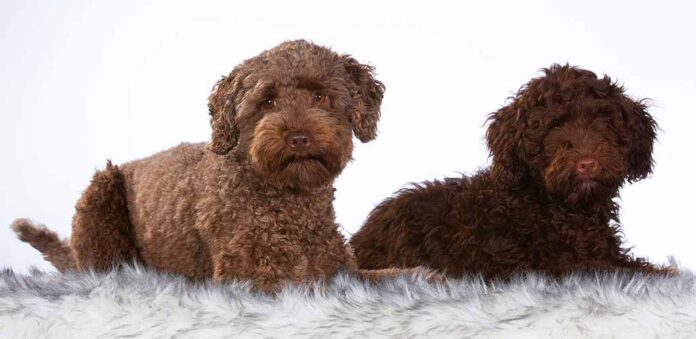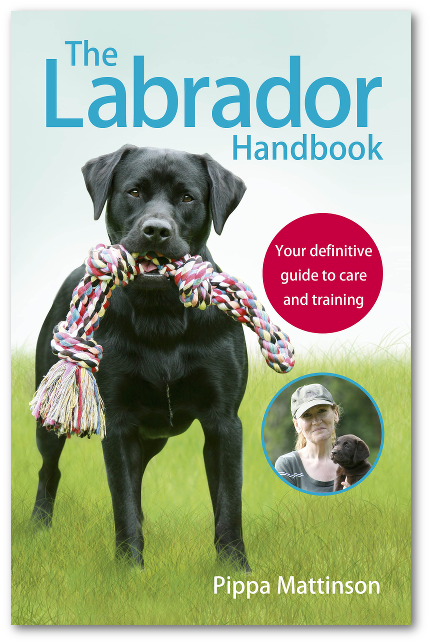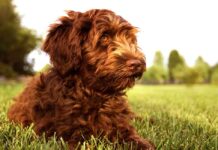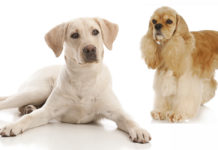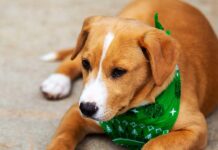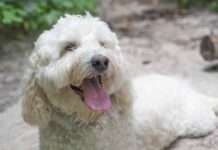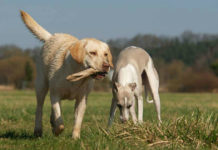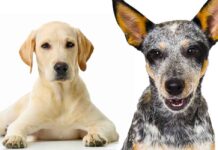The different types of Labradoodles can be categorized in a couple of ways. Modern Labradoodles are bred in three basic sizes: standard, medium and miniature. The Labradoodle can also be divided by filial generations, which relate to what proportion of Poodle and Labrador parentage the puppy has. There are also a variety of Labradoodle coat types too. It’s a lot to take on board!
Contents
- Where Labradoodles come from?
- Types of Labradoodle sizes
- Types of Labradoodle breeds
- Labradoodle generations in dog breeding
- The 3 Labradoodle coat types
Can you name all of the different types of Labradoodles? Labradoodles are one of my favorite mixed breed dogs, and that’s an opinion shared by many! In fact, Labradoodles are so popular that they’re always in demand. But, many people don’t realise there are several different types of Labradoodles to choose from. In this article, I’ll introduce you to the many Labradoodle dogs being bred around the world today. From size to color, generation to genetics, modern Labradoodles are as diverse and interesting as the people who love them!
Where All Types of Labradoodle Come From
Wally Conron was a breed manager at the Royal Guide Dog Association of Australia when an unusual request came in. A blind woman needed a guide dog – but not just any guide dog. She needed a guide dog who would not trigger her husband’s severe pet allergies.
Conron rose to occasion, crossing a Standard Poodle with a Labrador Retriever, then crossing the two dog names to get the name “Labradoodle” for his new dog breed. Conron’s first litter produced three puppies. One went to the woman and no one seemed to want the other two….until he told the marketing folks to advertise the puppies as “hypoallergenic.” And the craze for Labradoodles was on.
Since this point, a wide range of other Doodle breeds have emerged. And, Labradoodle breeders have set out to create different types of Labradoodles, from different sizes, to different coat types, and even different generations. Let’s start off by looking at the main Labradoodle sizes available.
Labradoodle Size Varieties
Generally speaking, you can expect an adult standard Labradoodle to weigh anywhere from 55 to 95 pounds and stand about 21 to 24 inches tall (paw pad base to shoulder top). An adult medium Labradoodle may weigh between 50 and 65 pounds and stand 17 to 20 inches tall. And an adult miniature Labradoodle may weigh 15 to 25 pounds and stand 14 to 16 inches tall.
Labradoodle Breed Types
You may be wondering if there is more than one Labradoodle dog breed. Not all breeders see eye to eye on this issue. Since the first Labradoodle dogs were developed and sold, breeders have crossed a huge number of breeds with Poodles to create Doodle dogs. For instance, you can find Cockapoos, Bernedoodles, Aussiedoodles – pretty much any breed you can think of has been crossed with a Poodle by now.
But, there are also some specific types of Labradoodles that you might not be aware of. Here are some general breed lineage differences to look out for when searching for a Labradoodle.
American Labradoodles
The original Labradoodle puppies were a crossbreeding experiment between a purebred Labrador Retriever dog and a purebred Standard Poodle dog. So these early Labradoodles had just two main genetic influences: Labrador Retriever and Standard Poodle.
Today, these Labradoodles are commonly referred to as the American Labradoodle.
Which is confusing since the original American Labradoodle was first bred in Australia. But the woman who received the puppy was from Hawaii in America – hence the name American Labradoodle.
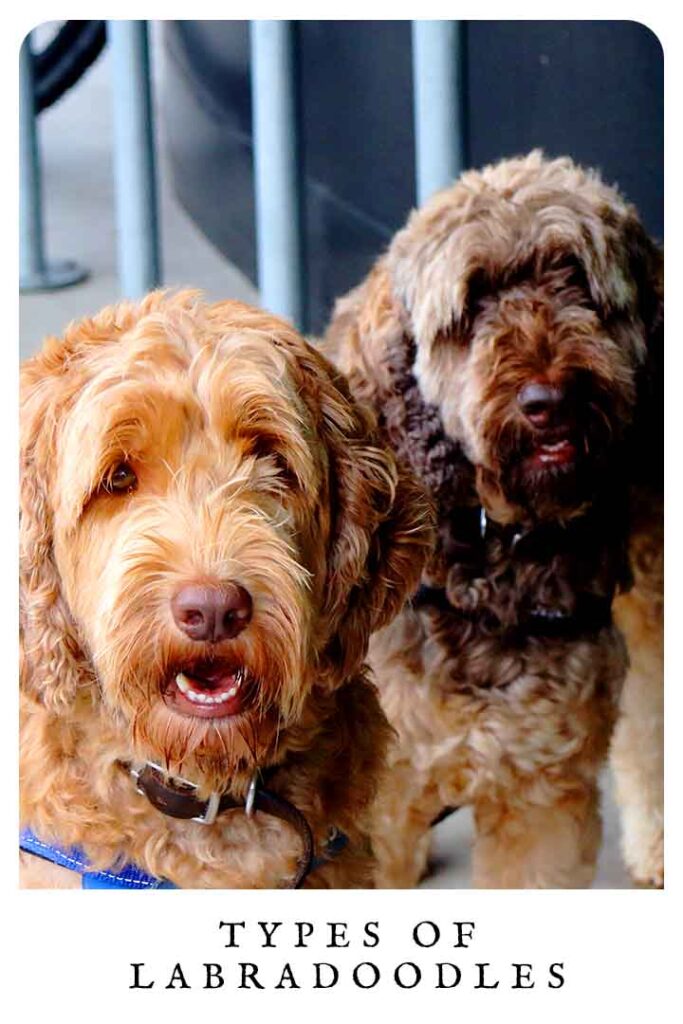
Australian Labradoodle
The true Australian Labradoodle is a very different dog. This dog breed arose due to genetic influence from up to six other dog breeds, including the Labrador Retriever, Standard Poodle, Cocker Spaniel (English and American), Irish Water Spaniel and Curly Coated Retriever.
Australian Cobber Dog
There is also a newer breed line currently in development in Australia that is called the cobber dog. The word “cobber” translates to mean “dog friend” in colloquial Australian lingo. Cobberdogs are identical to Australian Labradoodles but are bred specifically to work in service or therapy dog roles.
Labradoodle Generations in Dog Breeding
Another important fact to bear in mind when you are searching for your Labradoodle puppy or rescue dog is that hybrid dog breeders often specialize in one or more breed line generations. Here, when I say generations, I mean F1, F1b, F2, multi-gen (multi-generational) and so forth. Here is just a brief overview of what these designations mean in the world of Labradoodle dog breeding.
F1 Labradoodle
An F1 Labradoodle puppy has one purebred Labrador Retriever parent dog and one purebred Poodle parent. F1 Labradoodle puppies show the greatest variation in size, color, coat type and temperament when they grow up. This type of Labradoodle is the same as the original dog bred by Wally Conron.
F1b Labradoodle
An F1b Labradoodle, also known as a first generation backcross, is a Labradoodle with one purebred dog parent – either a Labrador Retriever or a Standard Poodle – and one F1 Labradoodle parent. It’s most common for breeders to use a Poodle as the purebred parent.
Because F1b Labradoodles are typically bred with the goal of producing a low to no-shed coat or a particularly sociable temperament, this is a great generation to choose if either trait is a high priority for you.
F2 Labradoodle
F2 Labradoodle puppies have two F1 or F1b Labradoodle parent dogs. At this stage in hybrid dog breeding, the breeder’s goal is to achieve uniformity of size, coat type and temperament between puppies in a single litter. If your puppy wish list gets very specific in each of these areas, an F2 or later generation Labradoodle is your best bet.
Multi-Generational Labradoodle
A multi-generational Labradoodle is essentially a puppy with F3 generation (or later) Labradoodle parents. Why do so many Labradoodle breeders today specialize in multi-gen Labradoodles? The reason is simple: this is where you start to see the most uniformity in key characteristics such as size, temperament and coat type.
Since many people searching for a Labradoodle puppy have very specific criteria they want in their new puppy, puppies from multi-gen breeding programs are always in demand.
Types of Labradoodle Coats
In addition to all the other variables in types of Labradoodles you have just read about, there is one key trait more to consider: coat type. Remember, the original Labradoodle was created for only one reason: because a blind woman needed a non-shedding dog to guide her. But breeding for this coat type was no easy task and it took breed founder Wally Conron quite some attempts to achieve his goal.
It won’t surprise you to learn the most popular Labradoodle coat type is the non-shedding type that some people still call hypo-allergenic. Unfortunately, science today has verified that there is no such thing as a truly hypoallergenic dog. Still, some coat types are less likely to provoke allergy symptoms in the sensitive.
Labradoodle coats typically fall into one of three categories: hair, fleece or wool. Hair is most Lab-like, and the most likely to trigger pet allergy symptoms. Wool is most like a typical Poodle coat, usually with tight curls that catch shedding hair. And fleece is the coat type that most people think of when they picture a Labradoodle dog – somewhere in between the other two coat types.
The Labrador Site Founder
Pippa Mattinson is the best selling author of The Happy Puppy Handbook, the Labrador Handbook, Choosing The Perfect Puppy, and Total Recall.
She is also the founder of the Gundog Trust and the Dogsnet Online Training Program
Pippa's online training courses were launched in 2019 and you can find the latest course dates on the Dogsnet website

